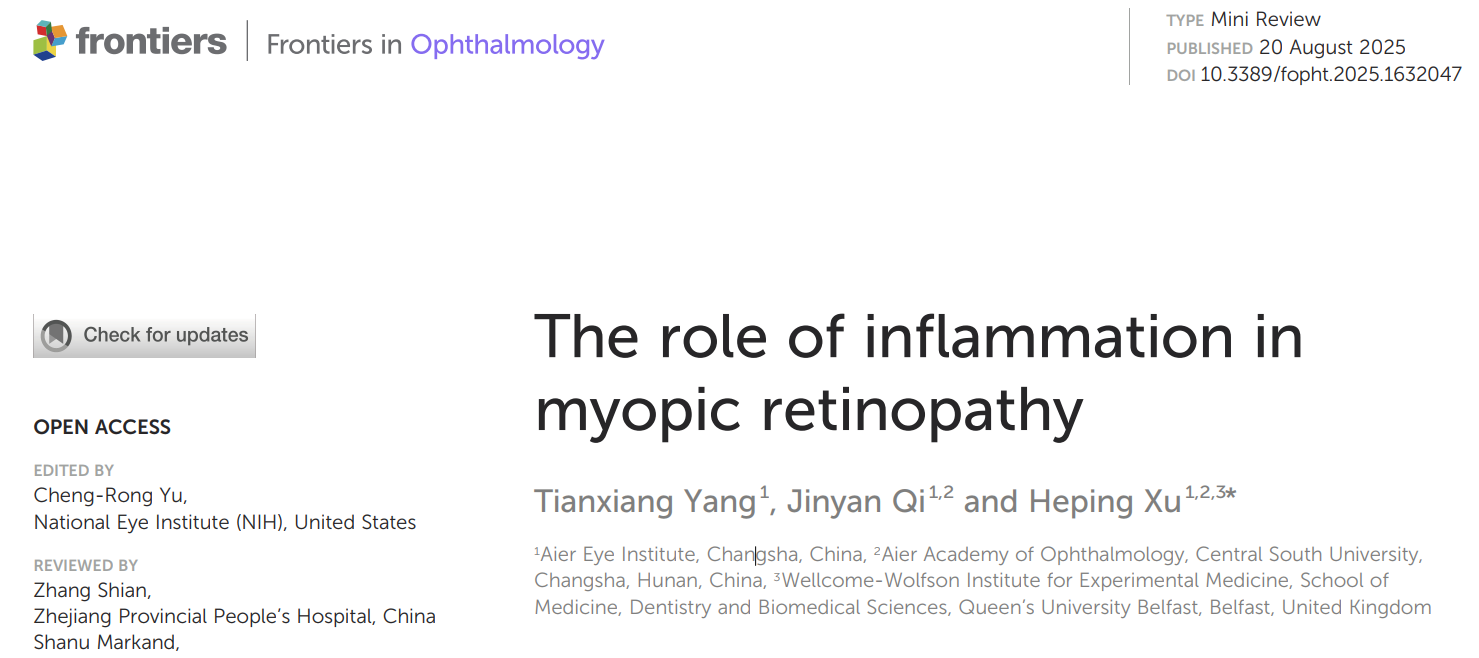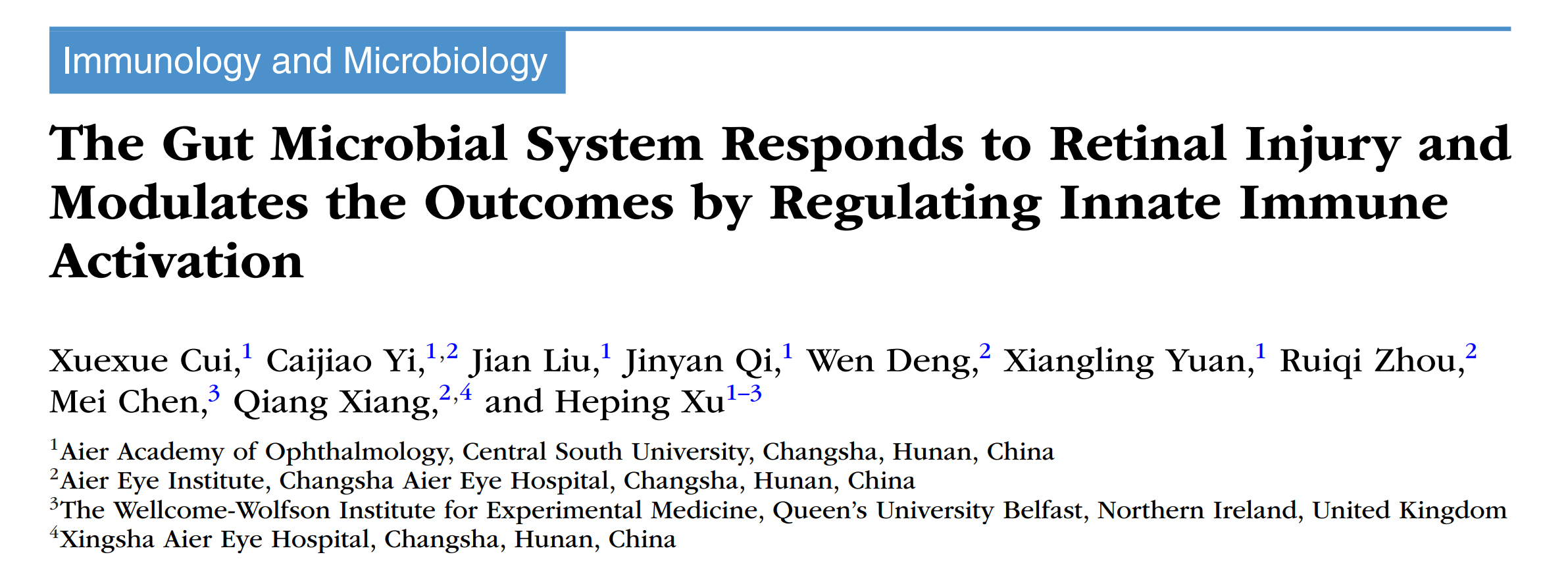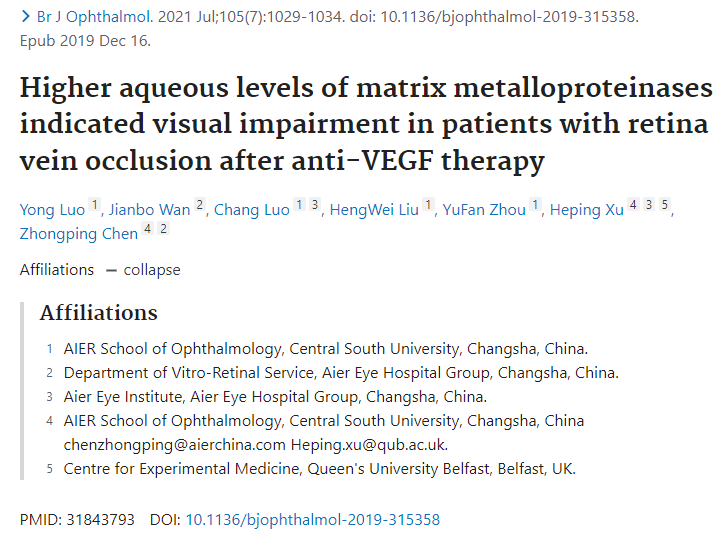- 首页
- 关于我们
概况介绍 研究方向 人才培养 委员会/committee
- 员工团队
特聘专家 主要领导 行政团队 技术团队 PI团队- 科研平台
中心实验室 实验动物中心 生物样本库- 最新资讯
- 首页
- 关于我们
概况介绍 研究方向 人才培养 委员会/committee
- 员工团队
特聘专家 主要领导 行政团队 技术团队 PI团队- 科研平台
中心实验室 实验动物中心 生物样本库- 最新资讯
The role of inflammation in myopic retinopathy发布日期: 2025-10-23
High myopia is a global health concern, often leading to degenerative retinal changes known as myopic retinopathy. Although mechanical stress, hypoperfusion, extracellular matrix remodeling, and growth factor dysregulation have been implicated in the pathogenesis of myopic retinopathy, emerging evidence highlights the critical role of chronic low-grade inflammation. Both innate and adaptive immune systems participate in myopic retinopathy through systemic and local inflammation. Systemically, immune dysregulation is marked by elevated levels of complement proteins C3, autoantibodies anti-LIM and senesce nt cell antigen-like-containing domain protein 1 (anti-LIMS1), and altered circulating immune cells (increased neutrophils and basophils). Locally, retinal homeostasis disruption triggers intraocular inflammation, evidenced by higher levels of interleukin-6 (IL-6), IL -8, tumor necrosis factor a (TNF-α), C-C motif chemokine ligand-2 (CCL2), C-X -C motif chemokine ligand 10 (CXCL10) and activating the complement system. The inflammatory response involves signaling pathways such as JAK-STAT and complement cascades. This review summarizes recent advances in understanding immunological mechanisms underlying myopic retinopathy, offering insights to guide future research.
KEYWORDS inflammation, pathologic myopia, myopic retinopathy, retinal degeneration, complement system, immune cells
相关文章-
High myopia is a global health concern, often leading to degenerative retinal ch...2025-10-23
-
近期,爱尔眼科研究所徐和平教授团队在眼病机理方面研究取得了多项令人瞩目的成果,为了解致盲性视网膜疾病的发病机制与治疗新靶点的发现带来了希望。2025-07-21
-
AbstractPURPOSE. The purpose of this study was to understand how the gut microbi...2025-05-09
-
The neuroretina is protected by its own defense system, that is microglia and th...2024-09-03
-
Purpose: To investigate the levels of matrix metalloproteinases (MMPs) in aqueou...2024-09-03
- 员工团队
- 员工团队






